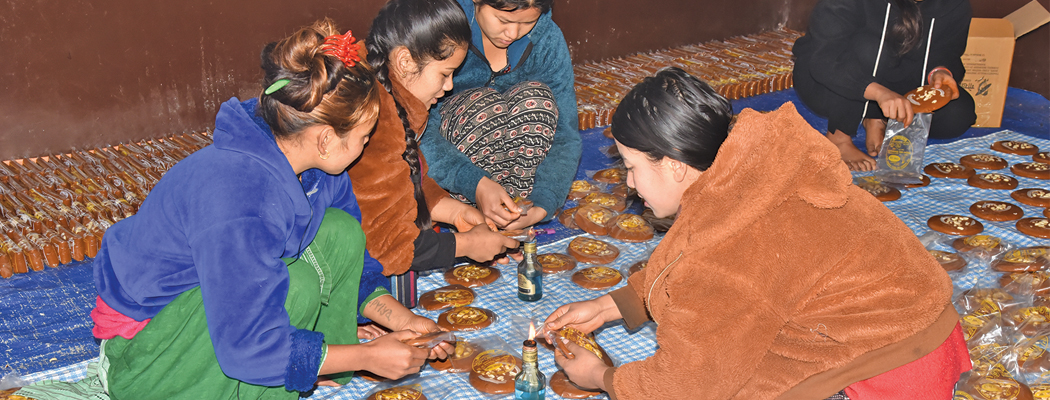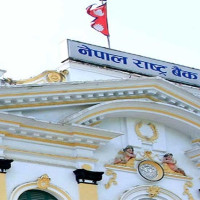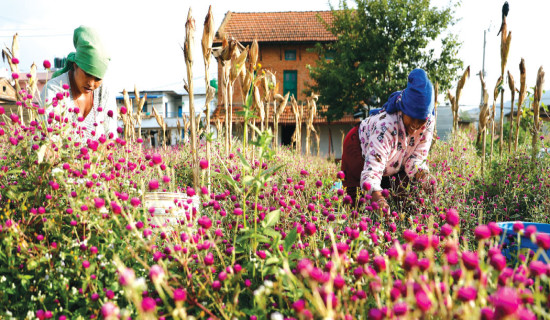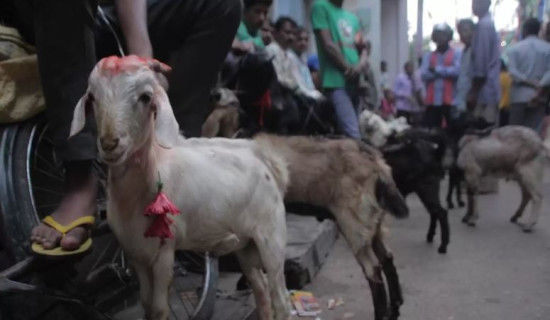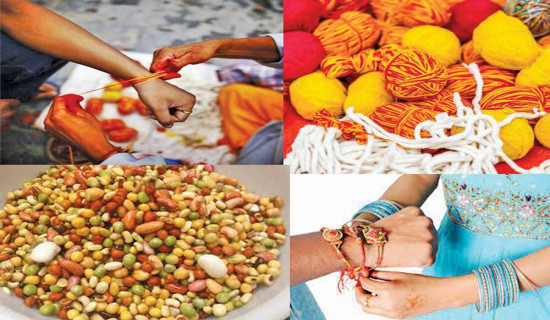- Tuesday, 16 December 2025
As Maghe Sankranti nears, Tokha ramps up Chaku production
Kathmandu, Jan. 13: Kids love it, adults like it too; the mouth-watering delicacy Chaku is a favourite of all. And with the unofficial Chaku day – Maghe Sankranti – just two days away, factories in Tokha, Kathmandu, are now running at full capacity to supply the chocolate-coloured sweet stuff to the markets of Kathmandu Valley and beyond.
Tokha, located in the northern edge of the valley, is the Chaku (hardened molasses) capital within the national capital. Many families in this ancient Newa settlement are involved in the business of Chaku-making for generations.
Using methods and technology that have remained largely same for centuries, Tokha has been producing Chaku, that is the sweetheart of tongues all across the country and, increasingly, among Nepalis living abroad too.
This winter alone, from mid-November to first week of January, Tokha produced approximately 315,000 kilograms of the sugary treat worth Rs. 34.6 million, informed Krishna Shrestha, president of the Tokha Traditional Chaku Conservation Society, the community organisation that manages the branding of all Chaku produced here.
Shrestha shared that this produce would be sent out to stores across Kathmandu, Lalitpur, Bhaktapur, Narayangadh, Pokhara, Chitwan and Sindhuli, among other places. He also added that it was in high demand in countries including Australia, Germany, Japan, the United States and Canada.
Presently, the town has 14 big and small traditional Chaku factories and in this main season, each of them produces around 7,000 kilograms of molasses every day ranging in variety from plain to masala and liquid Chaku to Dallo Chaku (in one-kilo blocks).
Shrestha’s factory also produces additional varieties of cut Chaku (Chaku in pieces) and special nutritious Chaku and Gundpak (sweet stuff made of thickened milk and many other ingredients) for new mothers.
Dallo Chaku used to be of particular importance in the traditional Newari family life because, as Shrestha elaborated, it used to be the gift people sent to the houses of their daughters-in-law to inform their parents that she had given birth to a child.
“With the gradual waning of this tradition, the traditional Dallo Chaku also disappeared. But, in an effort to preserve it, I have been producing it and, of late, its demand has also been rising,” Shrestha explained.
Chaku is a Newari food item made with concentrated sugarcane juice, jaggery, ghee and nuts.
The process of making the stuff begins by boiling the sugarcane and jaggery-mixed syrup in a large cauldron and then leaving it to cool down. Once it is set, the product is whipped, slapped and stretched multiple times until it turns dark brown. In the end, the product is packaged, but not before adding peanuts and cardamom for extra flavour.
Despite the enormous production, though, President Shrestha reminded all that Chaku was a seasonal business. Factories increase their output for the ‘peak season’ of Maghe Sankranti, the first day of the Nepali month of Magh, and scale it down for the rest of year which is the ‘off season’.
Many eat Chaku during the cold months because it keeps the body warm. People keeping the Swasthani fast also eat it during their month-long partial abstinence from food.
The treat is also beneficial to pregnant women as it nourishes them and helps them lactate after giving birth.During this peak season, though, each factory is able to employ
around 20 people, most of whom come from outside Kathmandu, specifically for the three Chaku months of November, December and January, Shrestha said.

